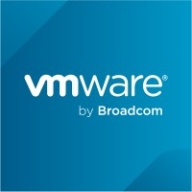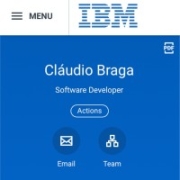

CloudStack and VMWare Tanzu CloudHealth are competing products in cloud infrastructure and management. VMWare Tanzu CloudHealth has an edge with its advanced analytics and cloud optimization capabilities appealing to large enterprises.
Features: CloudStack offers robust cloud orchestration, scalability, and broad API support. It integrates with multiple hypervisors, supporting a flexible cloud solution. VMWare Tanzu CloudHealth provides real-time analytics, cost optimization, and detailed multi-cloud management reporting.
Room for Improvement: CloudStack could enhance its analytics and reporting features and improve documentation for better user support. It may also benefit from expanding integration with third-party applications. VMWare Tanzu CloudHealth could simplify its deployment process and further refine its user interface for ease of use, along with offering more flexible pricing options to cater to diverse businesses.
Ease of Deployment and Customer Service: CloudStack is straightforward to deploy with a simple architecture, supported by an active community. VMWare Tanzu CloudHealth, while complex, is backed by detailed documentation and responsive customer service, assisting those with complicated multi-cloud setups.
Pricing and ROI: CloudStack is cost-effective and provides quick ROI due to its open-source nature with lower initial costs. VMWare Tanzu CloudHealth involves higher upfront expenses but offers long-term savings through sophisticated cost management and cloud optimization, presenting better ROI for those seeking advanced features.
| Product | Market Share (%) |
|---|---|
| CloudStack | 3.1% |
| VMWare Tanzu CloudHealth | 1.7% |
| Other | 95.2% |


| Company Size | Count |
|---|---|
| Small Business | 13 |
| Midsize Enterprise | 6 |
| Large Enterprise | 12 |
| Company Size | Count |
|---|---|
| Small Business | 4 |
| Midsize Enterprise | 2 |
| Large Enterprise | 5 |
VMware Tanzu CloudHealth, formerly known as VMware Aria Cost Powered by CloudHealth, is a specialized cloud management platform tailored for Multi-Cloud Cost Optimization. It offers comprehensive visibility into cloud spending across various providers, enabling users to identify areas for optimization and make informed resource allocation decisions. With features like reserved instance management, resource rightsizing, and automated cost governance policies, it facilitates financial management for optimal cost efficiency. Beyond cost optimization, Tanzu CloudHealth enhances cloud operations through workload optimization and governance automation, catering to multi-cloud environments encompassing public, private, and hybrid clouds. Its primary focus remains on enabling organizations to effectively manage and reduce cloud expenditures while supporting operations across diverse cloud platforms.
We monitor all Cloud Management reviews to prevent fraudulent reviews and keep review quality high. We do not post reviews by company employees or direct competitors. We validate each review for authenticity via cross-reference with LinkedIn, and personal follow-up with the reviewer when necessary.